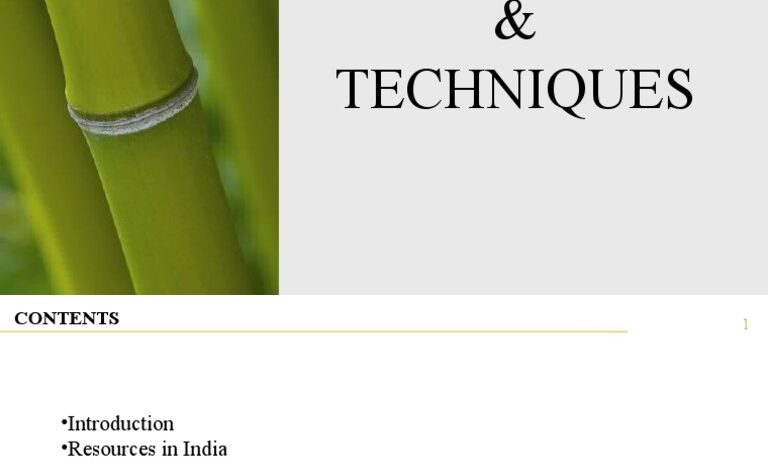Across the globe, bamboo stands as a beacon of sustainability—a verdant wonder that possesses extraordinary growth metrics and exceptional structural properties. Yet, its relationship with water can be as intricate as that of a dance partner; they can enthrall and elevate each other, or they can lead to missteps and calamity. Thus, understanding how to protect bamboo construction in a wet climate becomes paramount for architects, builders, and environmental advocates eager to harness this ecological marvel.
Just as the rain nurtures the soil, it poses a threat to bamboo if not adequately managed. High humidity and constant moisture can compromise the integrity of bamboo structures, leading to issues like fungal infestations, rotting, and insect attacks. Thus, the need for protective measures becomes an undulating necessity—a tapestry woven from knowledge, innovation, and respect for nature.
In this article, we will explore the meticulous strategies for ensuring the longevity of bamboo structures amid the challenges posed by wet climates.
Embracing the Waters: Bamboo’s Natural Resilience
Bamboo has long been celebrated for its remarkable adaptability. It is a plant that has survived millennia, adapting to a plethora of climates, including regions afflicted by monsoon rains. Its hollow internodes, akin to a straw imbibing the essence of life, allow it to flex and bend without breaking. Yet, this resilient facade does not render it impervious to the detriment of excessive moisture. The first step in safeguarding bamboo construction is to utilize treatments that accentuate its natural properties while creating a formidable barrier against the elements.
Among the most effective treatment options is the application of borate solutions. These substances not only serve as fungicides and insecticides but also provide a protective barrier from decay. Think of borate as an invisible superhero, lending bamboo the superpower it needs to combat moisture. When applying these treatments, it is essential to remember that the effectiveness increases with time—so patience is indeed a virtue.
Selecting Appropriate Site Conditions
When setting the stage for bamboo construction, the site selection plays an instrumental role in dictating its fate. Like a wise gardener, one must assess the environment carefully and plant bamboo where it can flourish without the threat of water pooling or stagnating.
Elevation is key. Laying the foundation above ground level can prevent moisture from seeping into the base of the structure. A well-designed drainage system will channel water away from the foundations, akin to rivers cascading through fertile land, nourishing but not drowning it. Furthermore, the choice of terrain can influence airflow around the building. Elevated sites with good ventilation can facilitate drying, thus reducing the chances of decay.
Embracing a well-drained foundation constructed from concrete or treated wood can further protect the bamboo from the wrath of water. This is akin to creating a brave fortress, standing steadfast against nature’s relentless siege.
Designing for Resilience: Architectural Considerations
When discussing bamboo construction, one must also delve into the heart of architectural design. The aesthetic appeal of bamboo structures, often celebrated for their organic curves and modern lines, can be juxtaposed with practical strategies for moisture management.
Incorporating overhangs and awnings is one way to shield bamboo from relentless rains. These architectural features act as umbrellas, diverting water away from the walls and the foundation. Furthermore, employing sloped roofs will allow water to run off efficiently, preventing accumulation. The angle of the roof can also reflect the cultural heritage of the region, allowing bamboo structures to resonate aesthetically while serving functional purposes.
Ventilation is another critical design element. Bamboo breathes, allowing moisture to escape easily, much like the exhalation of a deep sigh in a tranquil forest. Introduce cross-ventilation through strategically placed windows or vents, ensuring that humidity does not linger around the bamboo’s fibrous core.
In the realm of finishes, selecting breathable materials can help prevent moisture entrapment. Natural oils, resins, or environmentally friendly paints can enhance durability while maintaining the allure that bamboo conveys. The interplay of texture and tone can transform a structure into a vivid representation of its surrounding ecosystem.
Proactive Maintenance: Nurturing the Bamboo
Even with the most rigorous precautions, bamboo structures will require ongoing vigilance. Like a vigilant sentry guarding its domain, one must engage in proactive maintenance to mitigate the impact of humidity over time.
Regular inspections to identify early signs of decay, cracking, or insect infestations can be transformative. There’s wisdom in the adage “an ounce of prevention is worth a pound of cure.” Treatments can be reapplied as needed, effectively layering a protective shield around the bamboo.
Additionally, ensuring the landscaping around bamboo construction does not promote water accumulation is crucial. Trimming back vegetation, managing irrigation systems, and creating drainage paths can collectively maintain a harmonious balance between nature’s gifts and the architectural integrity of bamboo.
The Harmony of Nature and Craftsmanship
In conclusion, the interplay between bamboo construction and wet climates is a delicate waltz, one that requires careful choreography. By embracing natural treatments, making informed design choices, and committing to diligent maintenance, we enable bamboo to exist harmoniously in all its verdant glory. It is a testament to the resilience of nature and our ability to work in concert with it. Through conscious stewardship, bamboo construction can stand nobly against the elements, serving as an emblem of sustainability and architectural ingenuity—a true marvel of human creativity interwoven with the fibers of the earth.






